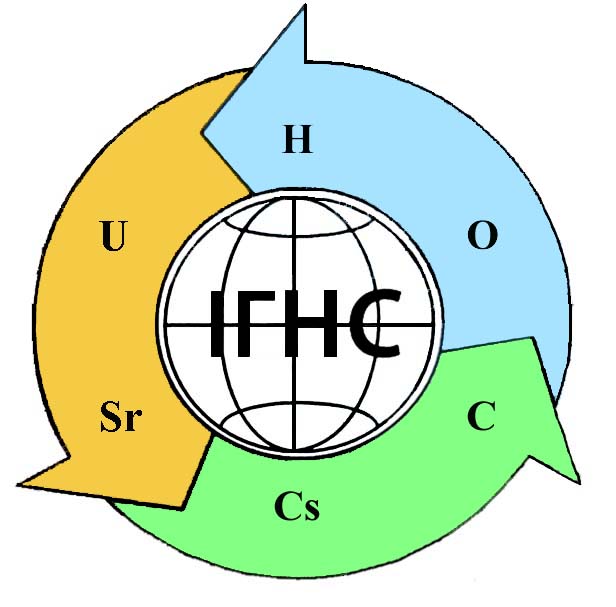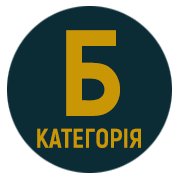ANALYSIS OF MODERN MATERIALS, METHODS AND TECHNOLOGIES OF EMERGENCY LIQUID RADIOACTIVE WASTE TREATMENT USED AT THE FUKUSHIMA DAIICHI NUCLEAR POWER PLANT
DOI:
https://doi.org/10.32782/geotech2022.35.21Keywords:
Fukushima Daiichi nuclear power plant, liquid radioactive waste, radionuclides, selective adsorbents, adsorption, co-precipitation, reverse osmosisAbstract
The operation of nuclear facilities generates large volumes of liquid radioactive waste which poses a potential long-term environmental hazard due to its high radiation activity and the possibility of the radioactive products release into the environment. The main objectives of liquid radioactive waste (LRW) management are to reduce the volume and radiation activity of liquid effluents unless the level of the residual activity allows excluding the LRW from the regulating control, as well as to transfer the LRW to a solid-state for further disposal in the form of solid radioactive waste. One of the methods that has been developed for these purposes is the sorption removal of radionuclides with the application of selective adsorbents. The accident at the Fukushima Daiichi nuclear power plant (NPP) has become one of the most serious in the nuclear industry. The works on the decontamination of radioactive effluents and subsequent use of the treated waters carried out at the Fukushima NPP are examples of modern trends in the management of liquid radioactive waste of emergency origin. The present publication analyzes the available information on the use of modern materials, methods, and technologies for LRW treatment at the Fukushima NPP in order to generalize the world experience and identify the modern trends in this direction.It was shown that the first stage of the emergency LRW treatment at the special installation with a selective adsorption system (zeolite), a co-precipitation system, and a reverse osmosis system was rather effective but generated large volumes of secondary waste. The replacement of the co-precipitation system with an additional selective adsorption system (using more selective adsorbents) has led to increasing efficiency and reducing secondary radioactive waste. For treatment of high-salt radioactive effluents, high efficiency has been demonstrated by the technology based on a system of various selective adsorbents for the consecutive removal of targeted radionuclides. Analysis of the results of the treatment of LRW of different chemical compositions at the Fukushima Daiichi nuclear power plant has demonstrated the relevance of further turnkey development of modern adsorption materials with high selectivity toward targeted radionuclides.
References
Lehto, J., Koivula, R., Leinonen, H., et al. (2019), Removal of Radionuclides from Fukushima Daiichi Waste Effluents, Separ. Purific. Reviews. 48 (2): 122-142.
http://www.tepco.co.jp/en/press/corp-com/release/indexold-e.html (Information from the official website of the TEPCO; accessed April 15, 2022).
Tsukada, T., Uozumi, K., Hijikata, T., et al. (2014), Early construction and operation of highly contaminated water treatment system in Fukushima Diichi Nuclear PowerStation (I) – ion exchange properties of KURION herschelite in simulating contaminated water, J. Nucl. Sci. Technol., 51: 886-893. https://doi.org/10.1080/00223131.2014.921582
Braun, J., Barker, T. (2012), Fukushima Daiichi emergency water treatment, Nucl. Plant J., 30(1): 36-37.
Pease L.F., Fiskum S.K., Colburn H.A., Schonewill P.P. (2019), Cesium Ion Exchange with Crystalline Silicotitanate: Literature Review, PNNL-28343, Rev.0; RPT-LPTTS-001, Rev. 0. Pacific Northwest National Laboratory, Richland, Washington
Sylvester, P., Milner, T., Jensen, J. (2013), Radioactive liquid waste treatment at Fukushima Daiichi, J. Chem. Technol. Biotechnol., 88: 1592-1596. https://doi.org/10.1002/jctb.4141
Tusa E. (2014), Efficiency of Fortum's CsTreat® and SrTreat® in cesium and strontium removal in Fukushima Daiichi NPP, ENC2014, Marseille, France (Information from the official website of the Fortum: https://www.fortum.com/sites/default/files/documents/efficiency_of_fortums_cstreat_and_srtreat_fukushima.pdf; accessed July 19, 2022).
Kani, Y., Asano ,T., Tamata , S. (2014), A new adsorbent for simultaneous removal of cesium and strontium, 40th Annual Waste Management Conference (WM2014), paper 14110. https://xcdsystem.com/wmsym/archives//2014/index.html
Kani, Y., Asano, T., Kamoshida, M., et al. (2016), RO concentrated water treatment equipment for risk reduction of contaminated waterstored in tank in Fukushima NPS, 42nd Annual Waste Management Conference (WM2016), paper 16655. https://www.wmsym.org/archives/2016/index.html (accessed April 15, 2022).
Möller, T., Harjula, R., Lehto, J. (2003), Ion exchange of 85Sr, 134Cs and 57Co in sodium titanolisicate and the effect of crystallinity on selectivity, Sep. Purif. Technol. 28: 13-23. https://doi.org/10.1016/S1383-5866(02)00004-7









